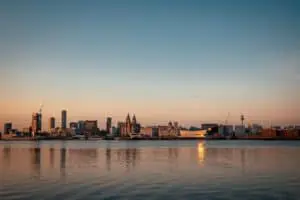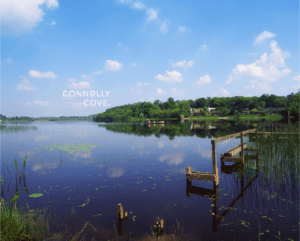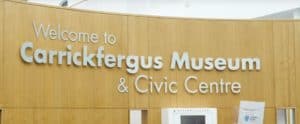The Irish Harp: Emblem of Defiance and Fortitude through History

Updated On: April 21, 2024 by Yasmin Elwan
The significance of the Irish harp transcends mere musicality; it embodies the very soul of Ireland’s cultural heritage. As one of the oldest and most revered symbols of the Emerald Isle, the harp holds a special place in the hearts of the Irish people. With its rich history dating back centuries, the harp has been intertwined with Ireland’s mythology, folklore, and national identity.
It serves not only as a musical instrument but also as a potent emblem of Irish pride and resilience, evoking images of ancient bards and storytellers weaving tales of heroism and love. The Irish harp stands as a timeless testament to the enduring spirit of Ireland, resonating with both tradition and innovation in the country’s vibrant musical landscape.

Throughout the years, the harp’s role has evolved, but its significance has remained constant. It has been a source of inspiration in literature and the arts, contributing to the cultural renaissance that still resonates in Ireland’s contemporary identity. As we reflect on the harp’s journey from a national emblem to an icon of independence, we come to understand its symbolic power—how it has strummed the chords of freedom and been a beacon of national pride.
The Harp as a National Emblem
The Irish harp is not just a musical instrument but a keystone of our national identity, signifying resistance and resilience throughout our history.
Symbolism in Irish History
The harp first resonated as a symbol of Ireland during the medieval period, recognisable as a testament to our rich cultural heritage. It has lived throughout the centuries as an emblem of resistance against foreign domination, especially during times when attempts were made to suppress Irish culture. Indeed, its image has been utilised in a multitude of political and social contexts, growing to become a definitive National Emblem of Ireland.
Harp on Official Documents
The Irish harp’s prestige extends into its prominent display on official documents and significant national symbols. Most notably, our Irish Passport bears the harp, signalling to the world the identity of its bearer. Additionally, the harp is elegantly engraved on our coinage, including the presidential seal and Irish Euro Coin, standing proud as a symbol of our nation’s history and sovereignty. With each use of these official items, the harp reinforces its role in both our past and our presence on the international stage.
Historical Development of the Irish Harp
Before delving into the specifics, it’s essential to highlight the Irish harp as not just a musical instrument but a resilient symbol through centuries of cultural change and political struggle. Often associated with Celtic tradition, this instrument’s development is deeply entwined with Ireland’s history.
Ancient Origins and Mythology
The harp’s design is said to be traced back to the ancient civilisations of Mesopotamia, emerging as a revered instrument within Gaelic society. Noted for its soothing and melodic sound, the harp was the centrepiece of Irish cultural expression and mythology. It’s believed that figures like Brian Boru, a great Irish king, were patrons of the harp, solidifying its place in Irish lore and society.
Changes Under British Rule
During the reign of Henry VIII, the Irish harp underwent a significant transformation. Once at the heart of Irish courtly life and bardic tradition, it faced suppression under British rule. Later, the instrument became a potent symbol of resistance, reflecting Ireland’s enduring defiance. Notably, the Crown’s efforts to control its use hinted at the deeper struggle for Irish independence.
Significant Harpists and Composers

In the pantheon of Irish music, the harp emerges as a resounding emblem of cultural endurance, with its practitioners shaping Ireland’s musical narrative through centuries. Here, we chronicle the legacy of significant harpists and composers who have echoed Irish resilience, from the venerated figures of history to the virtuosos of today.
Turlough O’Carolan and the Bards
Turlough O’Carolan, often revered as the greatest of all the Irish bardic harpists, left an indelible mark on the fabric of Irish music. Born in 1670, Carolan was known not only for skilful harpistry but also for his poetic compositions, many of which continue to resonate to this day. Despite suffering from blindness in his early years, his prodigious output of over 200 compositions speaks to a creative spirit undaunted by adversity.
Carolan’s legacy is celebrated by organisations such as the Historical Harp Society of Ireland, which acknowledges his contributions and promotes the appreciation of the historical harp. The society is a testament to Carolan’s impact and the enduring importance of the bardic tradition in Irish culture.
Contemporary Masters of the Harp
Fast forward to our current age, and the Irish harp continues to thrive, with contemporary musicians furthering the rich tradition within modern contexts. The influence of harpists such as Máire Ní Chathasaigh and others has been central to reinvigorating the harp’s place in Irish music. These stalwarts showcase their mastery across global platforms, earning international accolades while remaining firmly rooted in the lineage of Irish music.
Institutional pillars like Trinity College in Dublin support and highlight the relevance of the harp through scholarly study and performances. Such contributions nurture a new generation of harpists who look to the past for inspiration while carving out sonic realms distinctly their own.
Our shared heritage of harp music, encapsulated by these masters, acts as a resonant chord that ties us to the intricate tapestry of Ireland’s history, enriching our understanding of cultural identity through melodies that transcend time.
Cultural Impact and Irish Identity

The Irish harp is not just a musical instrument but a resonant symbol of cultural identity and resistance throughout Irish history.
Harp, Music, and Irish Tradition
Music has always been central to our Irish heritage, with the harp being a poignant embodiment of our cultural spirit. It has been an integral part of Irish traditions for centuries, often associated with legendary figures and Gaelic aristocracy. Our harpers were revered, and their music reflected the social and political landscapes of their times. Integral to celebrations and ceremonies, the harp’s sweet melodies and intricate designs have become synonymous with the essence of Irish culture.
Harp as a Symbol of Nationalism
The harp’s significance extends beyond music; it is a potent emblem of Irish nationalism and resistance. Throughout periods of British rule, where efforts were made to suppress Irish culture, the harp emerged as a symbol of defiance. Its image was adopted in various Irish flags and emblems, representing our nation’s enduring spirit. It was during these times that the harp also came to symbolise unity—joining people together in a shared identity rooted in the resilience of our cultural expression. This sense of nationalism is interwoven with our music, where the strums of the harp strings are like the heartbeats of our Irish heritage.
The Harp in Literature and the Arts

The Irish harp has shaped our collective identity through literature and the arts, emerging as a symbol of resistance and resilience in various mediums.
Literary References
In literature, the harp often appears as an emblem of Ireland’s enduring spirit. W.B. Yeats, a pillar of Irish literary heritage, referenced the harp in his poems, relating it to themes of nationalism and cultural identity. His works, rich with evocative imagery, frequently drew from Ireland’s historical struggles, casting the harp as a protagonist in the narrative of Irish resistance. For instance, in The Municipal Gallery Revisited, Yeats celebrates the artists whose works are like the strings of harps echoing the nation’s tumultuous past.
Harp in Visual Arts
Transitioning to visual arts, the Irish harp is a recurring motif found in various expressions, from Christian Stone Crosses to contemporary paintings. These crosses, adorned with intricate carvings, sometimes feature the harp, symbolising a blend of cultural and religious heritage. Its representation in art extends beyond stone, capturing the imagination of artists who have imprinted it on canvas, thereby preserving its legacy. The harp’s resilience is artistically echoed in these works, showcasing Ireland’s unyielding connection to this cherished emblem.
Evolution of Harp Music Genres
The harp has journeyed through time, echoing the resilience of Irish musical traditions and its multifaceted genres. Its repertoire has evolved from stately courtly pieces to lively tunes that move the masses.
From Courtly Airs to Popular Tunes
The harp began its musical story in the noble courts, performing courtly airs that resonated with the elite’s taste for sophistication. As time progressed, the harp’s repertoire expanded to include popular tunes, embracing a diverse selection that catered to the general public’s enjoyment. Traditional tunes often consisted of laments and love songs, which gradually gave way to more upbeat dance music. The harp seamlessly adapted to this transition, demonstrating its versatility across various social settings.
Influence on Other Musical Styles
The harp’s influence extended beyond its own genre, leaving a lasting mark on other musical styles. Its distinctive sound enriched Ireland’s musical heritage, weaving into the fabric of not only traditional Irish music but also classical compositions and contemporary pieces. The instrument’s ability to interlace with different musical traditions enabled the creation of a rich, hybrid repertoire. Additionally, it inspired other genres to incorporate similar lilting melodies and rhythmic patterns, which are characteristic of Celtic dance music.
Representation of the Harp in Society
The harp serves as a powerful symbol in Irish society, from its acknowledgement as a national icon to its appropriation as a commercial emblem. Its enduring presence is celebrated in educational frameworks and cultural organisations dedicated to ensuring that the harp’s historical and social significance is honoured and perpetuated.
From National Symbol to Corporate Trademark
The Irish harp, with its storied history of resilience, is firmly rooted in our national identity. It has transcended its musical origins to become an emblem on official government documents and the passports of our citizens. Its iconic status is recognised worldwide, conferring a sense of heritage and legitimacy.
However, its significance has been extended into the commercial realm, most notably by Guinness, where the harp logo has become synonymous with one of Ireland’s most famous exports. This adoption demonstrates the harp’s versatile representation—as a symbol of both cultural pride and commercial identity.
Harp Societies and Education
We regard the education and promotion of the harp as pivotal in preserving this cultural treasure. Organisations like Harp Ireland and The Irish Harp Society play crucial roles in this respect. They champion education and the proliferation of harp music, fostering a new generation of harpists and enthusiasts.
Through concerts, lessons, and community outreach, these societies are integral in supporting harpists and facilitating a broader societal engagement with the instrument. Our commitment to the harp’s legacy is unwavering, and as such, we dedicate resources to ensure that its sweet strings continue to resonate through the fabric of our society for generations to come.
The Harp’s Role in Irish Independence
The Irish harp is not just a musical instrument but a significant symbol of Irish nationalism and identity. Its history intertwines with Ireland’s struggle for sovereignty and independence, serving as a powerful emblem of resistance.
Use as an Emblem of Resistance
Historically, the harp embodied the spirit of resistance against British rule. During the late 18th century, Irish nationalist groups such as the United Irishmen adopted the harp as a symbol of their cause. The United Irishmen sought to unite all Irish people, regardless of religious background, to form an independent Irish republic. The harp, often shown on a green field, represented this unification and the aspirations for the Irish Free State.
The Green Flag and the Harp’s Image
The inclusion of the harp’s image on the Green Flag further cemented its status as an icon of Irish identity and independence. The Green Flag, prominently displaying the harp, was flown by rebels during the uprising of 1798 and later became a symbol of the Irish Free State. The resonance of the harp’s image on the Green Flag laid bare the Irish demand for sovereignty and self-determination, linking national culture with political aspirations.
Iconography and Design of the Irish Harp

The Irish Harp, beyond its serene music, embodies a storied history as a national emblem of Ireland, echoing tales of resistance and resilience. Its design has undergone significant transformations, reflecting Ireland’s cultural and political shifts throughout the centuries.
Evolution of Harp Imagery
Ireland’s identity has been intrinsically linked with the harp since medieval times. Initially, harp imagery depicted the instrument in various forms across coins, coats of arms, and flags. The emblem’s use signified the status and influence of Irish kings and chieftains, growing in stature alongside them. As a poignant symbol of Ireland’s sovereignty, the harp appeared on flags flown in resistance during pivotal moments, encapsulating the unyielding spirit of the Irish people.
The Brian Boru Harp
Named after a high king famed for uniting Ireland, the Brian Boru Harp represents the pinnacle of harp iconography. This design reflects a 14th-century artefact, which is preserved and displayed in Trinity College, Dublin, grounding the national symbol in historical legitimacy. The harp’s features include a detailed wooden frame and metal strings, thus becoming the quintessential model for the national emblem of Ireland. Its imagery has adorned government seals and official documentation, cementing it as a powerful national symbol of allegiance and identity.
Modern Presence and Global Influence

The Irish harp, with its resonant charm, has not only persevered through centuries but also carved a niche for itself in the digital age, resonating with audiences worldwide.
Harp in Digital Media
We have seamlessly transitioned our beloved instrument, the harp, into the digital realm, where it continues to enchant. Platforms such as YouTube have become a haven for Irish music, allowing the harp’s lilting melodies to be shared and appreciated globally. Irish music, interwoven with the harp, is frequently showcased in captivating videos, reaching an audience that spans continents. The digital presence has been pivotal in keeping the tradition alive and introducing the nuances of the harp’s sound to an even broader community of listeners.
The Global Harp Community
The global harp community is an intricate tapestry of artists and enthusiasts, steadfast in its commitment to the preservation and innovation of harp music. The harp’s influence has indeed become global, connecting individuals across disparate geographies, all united by a shared passion for this symbol of Irish heritage. This community is not confined to local boundaries but thrives in an international domain, from Irish cultural groups to global music forums. Networking events, concerts, and festivals are a testament to the harp’s enduring appeal and the global impact of Irish musical tradition.
Frequently Asked Questions
The Irish harp, with its rich history as a symbol of resistance and resilience, has greatly influenced Ireland’s cultural identity. Here, we address common queries about this iconic instrument.
What is the historical significance of the Irish harp as a symbol of resistance?
The Irish harp emerged as a potent emblem of resistance against British rule, especially during the late 17th and 18th centuries. It signified national pride and the desire for Irish sovereignty.
How has the Irish harp served as a symbol of resilience throughout Ireland’s history?
Throughout history, the Irish harp has represented Ireland’s enduring spirit and cultural persistence in the face of adversity and oppression. It stands as a testament to the resilience of the Irish people and their unyielding commitment to cultural preservation.
What are the notable differences between the Irish harp and the Guinness harp?
One key difference between the Irish harp and the Guinness harp is the direction they face. The Irish harp, as used in official emblems, typically faces to the left, while the Guinness harp faces to the right. Additionally, the Guinness harp has trademark restrictions, whereas the traditional Irish harp symbol is used broadly for national representation.
In what ways is the Irish harp featured on the national flag and emblems, and what does it represent?
The Irish harp is not displayed on the national flag but is prominently featured on state emblems such as coins, official documents, and governmental insignia. On these emblems, the harp is a declaration of Ireland’s cultural heritage and its sovereignty as a nation.
Can you explain the cultural importance of the Irish harp tattoo and its meanings?
An Irish harp tattoo often symbolises pride in Irish heritage and can represent a link to the enduring qualities of strength and resilience that Ireland has shown throughout history. It reflects a personal connection to the nation’s cultural legacy.
Who was Brian Boru, and what is the significance of his association with the Irish harp?
Brian Boru, a legendary High King of Ireland, is often associated with the Irish harp, although he was more renowned for his military triumphs than for music. The association symbolises strong leadership and unity in Irish history, as Brian Boru is credited with consolidating Ireland under one ruler.






